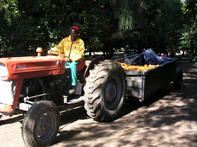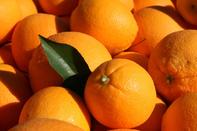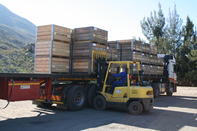Oranges are by far South Africa’s biggest citrus type. It accounts for roughly 60% of all South Africa’s citrus exports. Of this, Valencia is the biggest subdivision produced and exported, which accounts for more than double the production volumes of navel oranges - the other type of orange produced.

As shared by the Citrus Growers Association, Valencia oranges accounted for 34% of the total 83 490 ha of citrus registered for exports in 2018. More than 60% of these orange trees were planted in Limpopo.
The Eastern Cape accounts for 14% of the area under orange production, while the Western Cape accounts for 9% of orange production in South Africa.
Navel oranges were the second most-produced citrus type. It accounts for 20% of the total area registered for citrus exports. The Eastern Cape accounted for 39% of these plantings, making it the biggest production area of navels.
Limpopo and the Western Cape had the second and third largest areas under production, with Limpopo at 26% of production and the Western Cape at 25%
Navels vs Valencias

The navel has a second fruit that develops at its base, which resembles a human belly button or navel (which explains its name). Navel oranges were discovered in Brazil around the 1820s, most likely as a spontaneous mutation of a laranja selecta orange tree. This species is seedless, which means it has to be propagated from grafts.
Valencias are sweeter, have a thinner skin and usually mature earlier during the season than navels. They derive their name from the Spanish city, Valencia, but the hybrid was developed out of a pummelo x mandarin crossing in California, by an American citrus farmer and agronomist, William Wolfskill. The orange, however, had better commercial success in Spain than in California.
Varieties of Oranges
In 2018, Midknight was the most planted Valencia variety. It accounted for 36% of the total area under Valencias. The variety was first noticed in 1927 by AP Knight, after whom it was named, in an orchard at Summerville, Addo in the Eastern Cape. The variety’s full potential, however, was not recognised until the 1970s.
Valencia late was the second most planted variety; it accounted for 19% of this area. Whereas Delta accounts for 16% of the area under production. Turkey and Bennie account for 10% and 9% respectively of the area under production.
Palmer, Bahianinha, Cambria and Washington were the most planted Valencia varieties in 2018. Palmer accounted for 18%, Bahianinha for 14%, Cambria for 12% and Washington for 11% of the total area under production.
Oranges Season
The Valencia season runs from July to September, while the Navel season runs from June to July.
Sales of Oranges

Most of South Africa’s oranges are exported. The fruit is exported to various countries across the world, with the European Union being the biggest destination at 33% of the fruit. The Middle East was the second biggest destination in 2018, accounts for 19% of the fruit, followed by South-East Asia, which accounted for 18% of the fruit.
 This is followed by China and India which respectively account for 11.5% and 10.3%. South Africa contributes 1.9% of the total orange produc...
This is followed by China and India which respectively account for 11.5% and 10.3%. South Africa contributes 1.9% of the total orange produc...